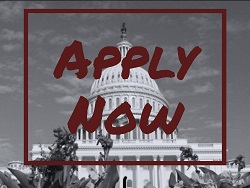Federal Aid for Infrastructure Could Stimulate Worcestor’s Economy
ROADS
Worcester Telegram & Gazette
Sarah Gantz
Boston University Washington News Service
02/11/09
WASHINGTON —The promise of what Worcester could be—colorful and attention-commanding—takes the form of an 18-foot-8-inch mosaic signpost that towers over Main Street outside the Hanover Theatre in downtown Worcester. The sign is part of the Wayfinding project, which calls for hundreds of signs to help visitors better navigate the city’s labyrinth-like tangle of roads.
For now, the hand-tiled tower that reads “Downtown” in cutout aluminum letters is the only one of its kind in Worcester until the city finds a way to fund the $2.7 million project.
But help could come soon. The sign project is one of 30 shovel-ready infrastructure and improvement projects the city has identified for funding when the $2.8 billion tentatively set aside for Massachusetts in the economic stimulus package is divvyed up among communities.
“We need help,” said Rep. James P. McGovern, D-Worcester. “We need investments in our infrastructure because it not only creates jobs but is something that will last a long time.”
Mr. McGovern described the transportation and infrastructure projects Worcester has proposed as “a catalyst for economic development.” City officials agree. They say that improving the city’s accessibility and navigability will bolster business.
“The biggest complaint about Worcester is that nobody knows where anything is,” said Troy Siebels, executive director of the Hanover Theatre.
Mr. Siebels said the painted metal and hand-tiled sign comes in handy when giving directions to the theater—“when you’re looking down Main Street, it’s the only thing you see”—and helps unite the theater to the downtown district.
“We’re only a couple of blocks from city hall, but it’s a couple of blocks that people don’t walk,” he said.
Congestion and inaccessibility from highways have long plagued the city, where the roads designed for a mill town serve a central business district. Plans to address the congestion of east-west traffic are among the city’s shovel-ready projects, according to Assistant City Manager Julie A. Jacobson.
The Worcester Regional Mobility Study, a state-funded program organized by the Central Massachusetts Regional Planning Commission, will be released this fall and will evaluate east-west traffic in and out of Worcester.
Some of the study’s ideas for stimulating business—widening roads, upgrading traffic signals, developing commerce along major corridors—can be done now and are included in the city’s shovel-ready plans, Ms. Jacobson said.
“It’s got to be looked at from a multimodal standpoint,” she said. The mobility study evaluates not only road quality but how travel by car, train, airplane and even bicycle can be improved.
The Worcester Regional Airport, for example, is notoriously inaccessible. Improved access to the airport, as well as to Union Station and other hubs of transportation, would improve the city’s economy by making Worcester better-connected to communities near and far, Ms. Jacobson said.
Better roads and more fluid traffic into the city could also mean a larger labor pool for businesses to choose from, said Nancy B. Cahalen, president of the Better Business Bureau of Central New England.
Ms. Cahalen agreed that better access to highways and clearer directions to sites of interest “once you’re in here” would also be beneficial for visitors. “If they had a good experience coming in,” she said, “they’d be more apt to make return trips.”
The $2.7 million cost to spread hundreds more Wayfinding signs throughout the city pales in comparison to some of the other proposed projects. The city requested $20 million for the east-west traffic enhancement program, $9.9 million for Belmont Street reconstruction and $7 million to renovate Quinsigammond Avenue.
“We know that this is an ambitious list,” Ms. Jacobson said, but this, she said, is what Worcester needs.
###

